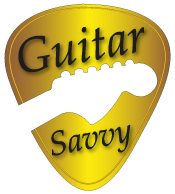
So you’ve started learning guitar and you’re now beginning to take a serious look at your technique. One of the most important aspects of learning to play any instrument, the guitar being no exception (whether electric, acoustic, classical or a combination) is to develop a sense of timing. This is an absolute must whether you’re planning on shredding guitar or you simply want to develop guitar speed and accuracy. You may be able to play a recognisable tune on your guitar but until you can put the notes both where and when they belong, you and your audience (assuming you still have one) will feel seriously underwhelmed. Now most experienced guitar players know the importance of owning and USING a metronome when they practise guitar but hands up those of you who own a metronome and it stays in your gig bag or guitar case? If you’re playing in a band, what do you think the drummer/percussion section is there for if not to set the pace of the piece you’re playing? Using a metronome will help you become accustomed to listening to the other members of your band (particularly percussion) so you don’t find yourself getting out of sync with them. That’s use numero uno.
It’s time to dust off that metronome and put it to good use – if you don’t yet own one make that investment now (Check out metronomes at Gear4Music). There are loads of makes and models of guitar tuner that come with metronome functionality built in (such as the excellent Boss TU-80). They can be fairly inexpensive but offset that against the improvements you will make to your playing if you incorporate a metronome into your practice sessions. Use number 2 (the most common use) for the metronome is to help you maintain a steady tempo throughout the piece of music (as the natural urge is to speed up as you play: if you think you’re immune to this particular affliction, try recording yourself as you play with and without a metronome and listen closely to your timing on the playback).
Read any bit of advice on learning to get to grips with a piece of music, and you’ll notice that you’re advised to play it slow at first, gradually building up speed when you get to grips with it. This is good advice – I recommend you start off at between a quarter and half of the full tempo (so if the tempo of the piece of music is 200bpm, start off at 50-100bpm). Another great use of the metronome (use number 3) is as an enforcer to keep your speed of play down until you have the piece nailed and can consistently play it accurately over and over again at that tempo. Then, and only then begin to increase the tempo (if you started at 50bpm, try again at 75bpm then at 100bpm) and practise each tempo until finally, you’re playing the piece at the tempo suggested on the particular TAB you’re working from (or if no tempo is noted, you can set the tempo manually by listening to the song). If you find a particular tempo is too high then reduce it a bit. Sounds logical enough, doesn’t it?
If you don’t yet use a metronome during guitar practice sessions why not give it a try and observe your playing improve beyond all expectations.
Good luck!


![Reblog this post [with Zemanta]](http://img.zemanta.com/reblog_e.png?x-id=7b58fbf8-a20f-41b3-ba71-31f8073fb38d)